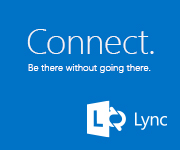One Liner: Enabling Mapped Drives in Elevated PowerShell Sessions
If you’ve worked with mapped drives in PowerShell sessions, you know it’s problematic to access mapped drives from an elevated PowerShell session when UAC is configured to prompt to prompt for credentials. Microsoft released a TechNet KB article on this issue quite some time ago. The article shows different ways to address the problem, from using the Local Security Policy, mapping the drives again in the elevated prompt, and using the registry. We’ll focus on the registry here for several reasons. The first is that using the local security policy seems burdensome; mapping the drives again seems redundant, and potentially confusing if the original mappings change and the ones in your PowerShell session don’t; and thirdly, and most important, we’re talking PowerShell here!
The local security policy really just changes registry settings under HKLM:\SOFTWARE\Microsoft\Windows\CurrentVersion\Policies\System, so using PowerShell to set registry settings accomplishes the same thing. We can add new property, EnableLinkedConnections using the New-ItemProperty cmdlet, which also lets us set its value to 1. A value of 1 will enable the mapped drives in elevated session, while a value of 0, or completely removing the property, disables those mapped drives in an elevated session. So let’s implement this:
New-ItemProperty -Path 'HKLM:\SOFTWARE\Microsoft\Windows\CurrentVersion\Policies\System' -Name EnableLinkedConnections -Value 1 -PropertyType 'DWord'
Now, if you want to put this in your PowerShell profile, then it will get processed every time. The problem is that you’ll get a “The property already exists” exception error every time it runs after the first time. So, we just wrap it in an IF statement using Get-ItemProperty, checking to see if it exists first. If not, create the item property.
if (-not (Get-ItemProperty -Path 'HKLM:\SOFTWARE\Microsoft\Windows\CurrentVersion\Policies\System' -Name EnableLinkedConnections)){
$null = New-ItemProperty -Path 'HKLM:\SOFTWARE\Microsoft\Windows\CurrentVersion\Policies\System' -Name EnableLinkedConnections -Value 1 -PropertyType 'DWord'
}
Why would we want to include this in our profile? Because when we get new machines, or reload an existing machine, we don’t want to have to go back and manually configure everything again. We can just manually run the profile script and have it configure everything for us.






Follow Me